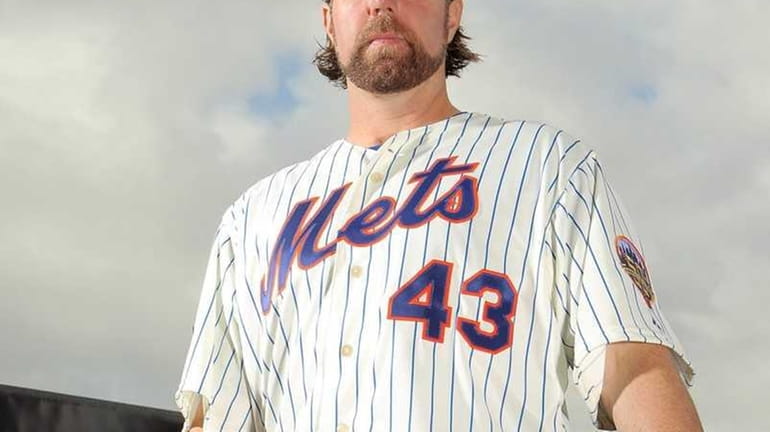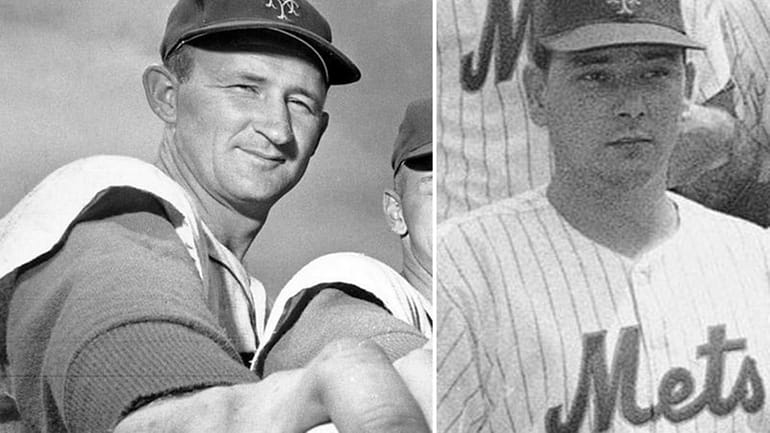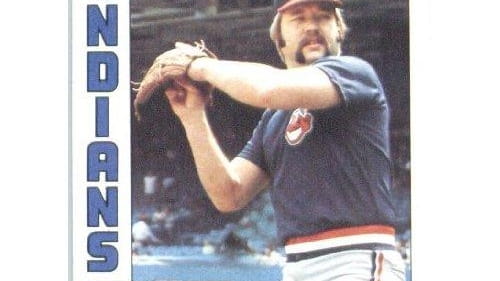Mets' starting five is a unique bunch

Pitcher R.A. Dickey poses for a photo in Port St. Lucie, Florida. (March 2, 2012) Credit: Getty Images
One March morning, in a mostly empty clubhouse, Dillon Gee is sitting on his locker stool, flipping through pages of automobile listings. But these aren't just any car ads. The photos feature Porsches, Mercedes, BMWs and even one unnamed prototype that looks like a spaceship.
Standing next to Gee is Johan Santana, who is handing him the pages and giving details about each luxury ride. The only thing missing from these listings is the cost of the car. All the ad says is "Call for Price" and a phone number.
"If you have to ask," Gee says, "it's too expensive for you."
Therein lies the difference from one end of the Mets' rotation to the other. Santana is in the fifth year of a six-year, $137.5-million contract that pays him $24 million for this upcoming season alone. Gee, the club's fifth starter, is expected to earn roughly $500,000. Aside from Santana, the combined salaries of the other four -- which also includes R.A. Dickey, Jonathon Niese and Mike Pelfrey -- total roughly $11 million.
As rotations go, this group is extremely top-heavy, and its highest-paid commodity, two-time Cy Young winner Santana, is arguably the most fragile of the bunch. But the wide range in tax brackets is not the only thing that separates these starters. With a variety of styles, that diversity might prove to be this staff's greatest strength.
"We have to be a team that offers as many looks -- different looks -- as any other team out there," said Dickey, now the only active knuckleballer in the majors after Tim Wakefield's retirement last month. "In the framework of a short series, that counts for something. The other team can't get comfortable from day to day because the looks are so different."
Thinking aloud for a moment, Dickey comes up with the formula.
"What's it called when the sum of the parts are greater than the individual whole?" he asks, then quickly answers, "That's called synergy, right? So we have good synergy. Maybe some of us aren't what we once were -- or what we never were -- but together we're better than maybe we could be individually."
When trying to sell this rotation to the ticket-buying masses, it's as good a sales pitch as anything else the Mets' front office tried during the offseason. At the top is Santana -- the Cy Young changeup specialist -- followed by knuckleballer Dickey, coveted lefthander Niese, enigmatic sinkerballer Pelfrey and the versatile Gee.
With the team in the midst of a serious financial crisis, and trying to fend off Madoff trustee Irving Picard's lawsuit, general manager Sandy Alderson spent practically zero on his rotation during the offseason. The company line was that the Mets already had five reliable starters, even if Santana hadn't pitched in a major-league game in 18 months.
Without the cash to add an elite starter, Alderson treated the offseason like a blackjack player standing on a hand of 12 and hoping for the best. The odds are against that strategy succeeding.
"With Johan coming back, I think there's tremendous upside there," Alderson said, "and I think there's definitely room for growth. I think it was a durable, solid rotation last year but definitely had room for improvement. We need to see what happens this season."
The dirty little secret is that the Mets are treading water until their own Generation Next arrives. With top prospects Matt Harvey, Zack Wheeler, Jeurys Familia and Jenrry Mejia ranging from one to two years away from the majors, the rotation is not an area the team wants to clog up with expensive long-term contracts.
Instead, the front office hopes the current group, bolstered by an up-and-comer in Niese, can hold on long enough for the transition to occur in a somewhat smooth fashion. That's if Niese -- who was mentioned briefly in trade conversations during the offseason -- isn't moved for other pieces at some point. As for right now, Niese believes the rotation is gaining some momentum.
"I think it's a confidence thing," he said. "We've all had success to some degree, and I have more confidence in my stuff that I had last year. Knowing that I can throw all my pitches for strikes, and where I want to throw them. Knowing we can get big-league hitters out, that helps a lot."
Back in 2010, Pelfrey made a serious bid for the All-Star team with a 10-1 first half. Last season, Gee started off 7-0 and finished 13-6, the best single-season winning percentage (.684) for a Mets rookie pitcher. Before Niese's 2011 season was ended by an intercostal strain of his right side, he was in a stretch of 106 strikeouts in 109 innings, and his 8.75 K-per-9 ratio was fifth best in the National League during that span.
Santana's resume is too accomplished to be detailed in this space, and if healthy, he can handle his responsibilities as a No. 1.
Dickey, who is as unhittable as anyone in the majors on his very best days, can mess up opposing hitters for an entire series with an effective knuckler.
"Everyone here knows what it takes," Santana said. "Now it's just a matter of going out there and doing it with consistency. That's what we're looking for. I think that's the most important thing."
The budding camaraderie should help, too. Despite their differences, the Mets' starters, who share a single row of lockers in the clubhouse, seem to be forming somewhat of a bond. The five of them went out to dinner together at a local Italian restaurant two weeks before the end of spring training, and pitching was only a small part of the conversation.
When asked about the group's collective identity, however, Dickey was stumped. With all the pitching mutations of the staff, a reporter suggested that maybe X-Men would be a good way to describe the Mets' rotation.
Upon hearing that, Dickey smiled.
"Yeah, the X-Men, I like that," Dickey said. "I want to be Wolverine. Can I be?"


